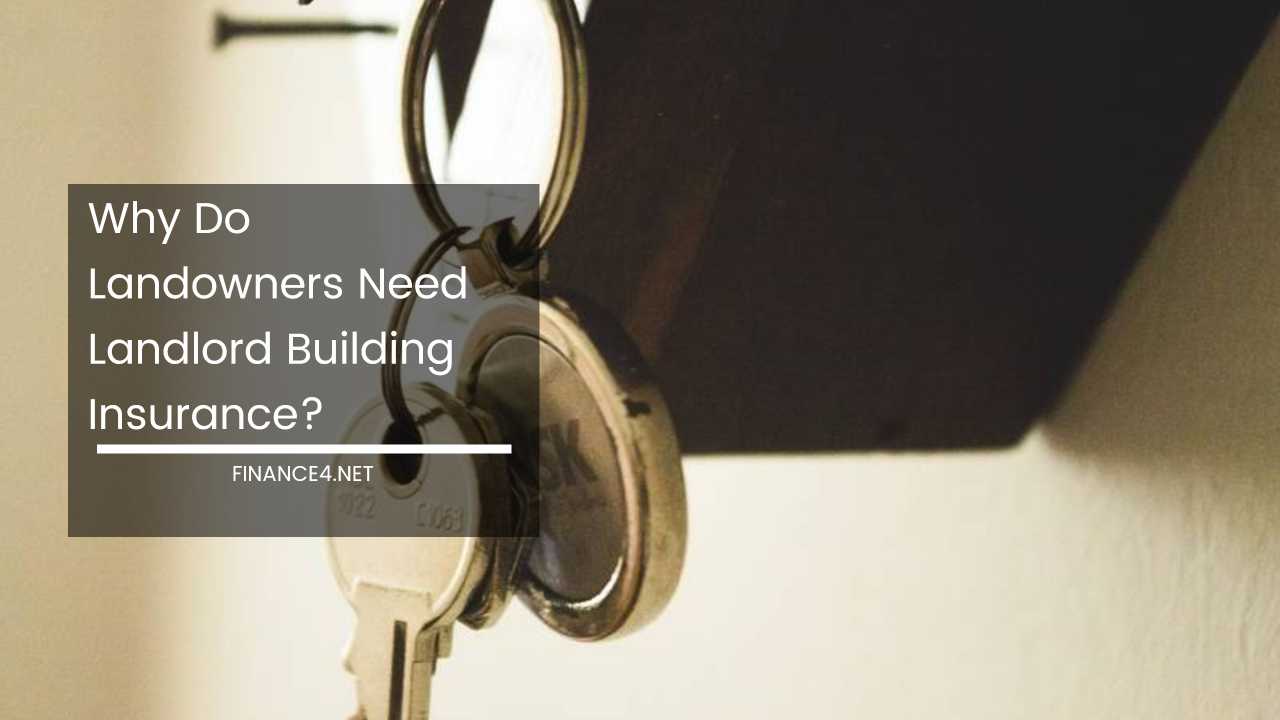Why Landlords Need Landlord Building Insurance

The Unforeseen and the Unpreventable: Why Landlords Need Protection
Life, by its very nature, is a series of unexpected turns. While we meticulously plan for our futures, unforeseen circumstances can disrupt our best-laid plans.
This is where insurance steps in, acting as a financial shield against a multitude of potential risks. Just as we have life insurance for our loved ones and health insurance for ourselves, landlords have a specialized form of protection: landlord building insurance.
Beyond Standard Coverage: Understanding Landlord Building Insurance
Landlord building insurance goes far beyond the scope of a typical homeowner’s insurance policy. It’s specifically designed to safeguard rental properties against a broader spectrum of threats.
Unlike owner-occupants who reside in their properties, landlords entrust their buildings to tenants. This introduces additional elements of risk that necessitate specialized coverage.
Peace of Mind for Landlords: A Shield Against Financial Loss
Imagine this scenario: you’ve invested in a rental property, a source of income and a potentially long-term asset.
Now, picture a major setback – a fire engulfs the structure, a violent storm rips off the roof, or vandalism leaves the building in disarray. Repairing such extensive damage can be a significant financial burden.
Landlord building insurance offers peace of mind by providing crucial financial assistance in these situations.
A Comprehensive Safety Net: What Does Landlord Building Insurance Cover?
Landlord building insurance goes beyond just protecting the physical structure of the property. Here’s a detailed breakdown of what it typically covers:
- Structural Damage: This is the core coverage, protecting the walls, roof, floors, and other permanent components of the building in case of fire, lightning, explosions, storms, vandalism, and other unforeseen events.
- Loss of Rent: If the property becomes uninhabitable due to a covered event, the insurance may compensate for lost rental income while repairs are underway. This ensures a steady income stream even during unexpected situations.
- Liability Coverage: Accidents are a fact of life. If a tenant, visitor, or someone else gets injured on the property and sues you, the liability coverage can help cover legal fees and settlements. This protects you from significant financial liabilities.
- Additional Coverage Options: Depending on the insurer and your specific needs, you may be able to add coverage for additional structures like garages, sheds, or specific contents within the property (though contents insurance is typically separate). For example, if you rent out a furnished apartment, you might consider coverage for the furniture in case of damage.
The Importance of Adequate Coverage: Why You Shouldn’t Gamble with Your Investment
A recent survey revealed that a substantial portion of properties lack sufficient insurance coverage. In the case of rental properties, this lack of coverage can be financially devastating. Imagine a major fire rendering the building unusable.
Without proper insurance, the burden of rebuilding falls entirely on you, potentially wiping out years of rental income and creating a significant financial strain.
Tailoring Coverage to Your Needs: Choosing the Right Insurance Plan
Landlord building insurance comes in a variety of plans with different coverage levels and costs. It’s crucial to assess your property’s value, potential risks in your area, and your budget to choose the right plan. Consider factors like:
- Replacement Cost: Don’t underestimate the ever-increasing cost of materials and labor. Ensure the coverage amount is enough to rebuild the entire structure in the event of a total loss.
- Deductible: This is the amount you pay out of pocket before the insurance kicks in. A higher deductible lowers your premium, but means you’ll shoulder more initial costs in case of a claim. Choose a deductible that strikes a balance between affordability and your risk tolerance.
- Additional Coverages: Consider optional add-ons that address specific risks in your area. For instance, if your property is in a flood-prone area, flood insurance is a wise investment. Similarly, vandalism coverage might be essential in high-crime areas.
Finding the Right Partner: Choosing a Reputable Insurance Provider
Take your time to research and compare quotes from different insurance companies. Look for providers with a strong reputation for the following:
- Customer Service: In the event of a claim, a responsive and helpful customer service team is crucial. Ensure the company has a proven track record of efficiently handling claims.
- Competitive Rates: While cost is important, don’t prioritize the cheapest option over comprehensive coverage. Look for providers that offer competitive rates without compromising on coverage.
- Comprehensive Coverage Options: Choose a company that offers a variety of add-on coverages to allow you to tailor your policy to your specific needs.
Beyond the Quote: Essential Tips Before Signing Up
Don’t just focus on the price tag. Here are some additional tips to ensure you get the best possible coverage:
- Read the Fine Print: Don’t underestimate the importance of understanding the policy wording. Carefully review the exclusions and limitations of each policy before signing up. This will help you avoid any surprises down the road if you need to file a claim.
- Ask Questions: Don’t hesitate to ask the insurance company representative any questions you may have about coverage details and claims processes. A knowledgeable and helpful representative can clarify any doubts and ensure you choose the right policy.
- Consider Reviews and Ratings: Research online reviews and independent ratings of different insurance companies. This can provide valuable insights into customer satisfaction with claim handling, customer service, and overall experience.
Mitigating Risk: Proactive Measures for Landlords
While insurance provides a financial safety net, it’s always wise to take proactive steps to minimize risks. Here are some strategies landlords can implement:
- Tenant Screening: Conduct thorough tenant screenings, including credit checks, background checks, and verifying references. Responsible tenants are less likely to cause damage or engage in risky behavior on the property.
- Regular Maintenance: Schedule regular inspections and preventative maintenance to identify and address potential problems early on. This can help prevent minor issues from escalating into costly repairs later.
- Clear Lease Agreements: Have a clear and well-drafted lease agreement that outlines tenant responsibilities regarding property maintenance and use. This can help establish expectations and potentially minimize disputes.
Beyond the Building: Additional Considerations for Landlords
Landlord building insurance doesn’t cover everything. Here are some additional considerations for comprehensive protection:
- Contents Insurance: While landlord building insurance covers the structure, it typically doesn’t cover the contents of the property. If you rent out a furnished apartment, consider separate contents insurance to protect your belongings.
- Loss of Income Due to Vacancy: Some insurance policies offer coverage for lost rental income if the property remains vacant between tenants due to reasons outside your control. Explore this option if vacancy rates are high in your area.
- Umbrella Insurance: For an extra layer of protection, consider umbrella insurance. This provides additional liability coverage beyond the limits of your landlord building insurance policy, potentially safeguarding you from significant lawsuits.
Final Thoughts: A Wise Investment for Long-Term Security
Landlord building insurance is not an expense, but a wise investment that protects your valuable property, financial security, and peace of mind.
It provides a safety net against unforeseen events that could otherwise cause significant financial hardship. By choosing the right coverage, understanding the policy details, and taking proactive measures to mitigate risks, you can ensure your rental property remains a source of income and a secure asset for years to come.
Remember, a well-protected property translates to a more stable and less stressful experience for both you and your tenants.



